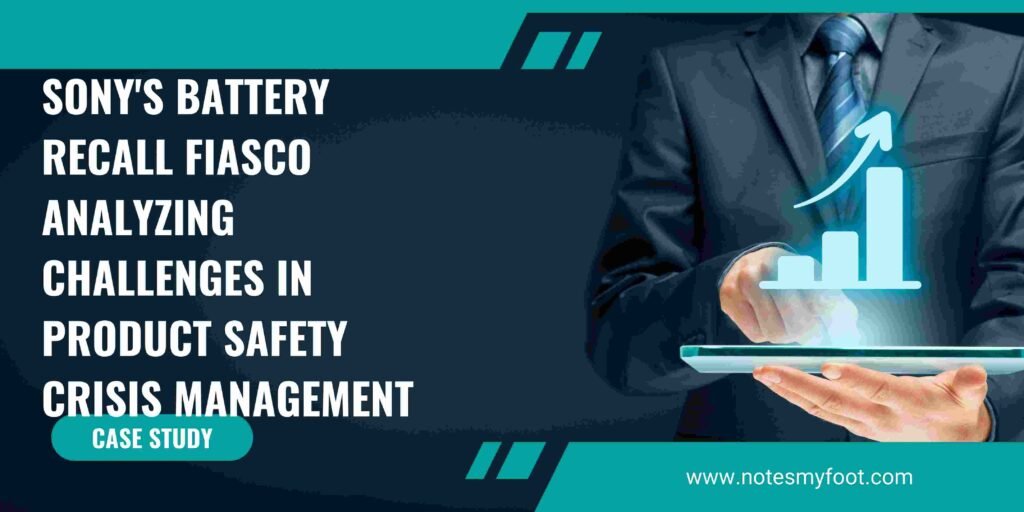
Sony's Battery Recall Fiasco Analyzing Challenges in Product Safety Crisis Management
In the world of multinational corporations, product safety crises can pose significant challenges. One such case that made headlines was Sony’s Battery Recall Fiasco. This blog post aims to delve into the issues and challenges faced by large corporations when handling such crises, emphasizing the importance of clear and effective communication with customers during controversies.
Section 1: Sony's Total Recall
Sony Energy Devices Corporation found itself in a precarious situation when its lithium-ion batteries, commonly used in notebook PCs, were discovered to have a defect. This led to a massive recall in collaboration with notebook PC manufacturers like Dell, Lenovo, IBM, and Apple. The scale of the recall was unprecedented, impacting millions of consumers worldwide
Section 2: Background Note
To understand the gravity of the situation, it’s crucial to acknowledge the significance of product safety and security. Sony, as a reputable brand, faced immense pressure to handle the crisis appropriately. The public relations nightmare that ensued in the wake of the recall raised concerns about Sony’s brand image and reputation.
Section 3: The 'Zippo' Batteries
Known colloquially as the ‘Zippo’ batteries, Sony’s faulty lithium-ion batteries posed potential risks of overheating and, in extreme cases, even explosions. The United States Consumer Product Safety Commission played a crucial role in assessing the severity of the issue and ensuring consumer protection.
Section 4: The Impact of the Recall
Section 5: Future Outlook
In the aftermath of the crisis, Sony Energy Devices Corporation had to overhaul its product management practices and quality control measures. Rebuilding consumer trust required implementing stringent safety protocols and transparent communication channels. It also prompted collaborations with industry regulators and partners to ensure the prevention of similar crises in the future.
Conclusion:
Sony’s Battery Recall Fiasco serves as a stark reminder of the challenges faced by multinational corporations in managing product safety crises. Clear and effective communication with customers is paramount during controversies to mitigate reputational damage and rebuild trust. The aftermath of the recall prompted Sony to reevaluate its product management strategies and prioritize the safety and security of its offerings. By learning from such incidents, corporations can strengthen their crisis management approaches and protect both their customers and their brand. Also got to know about the Maruti Suzuki’s Advertising Strategies: Driving Success in the Indian Passenger Car Industry
